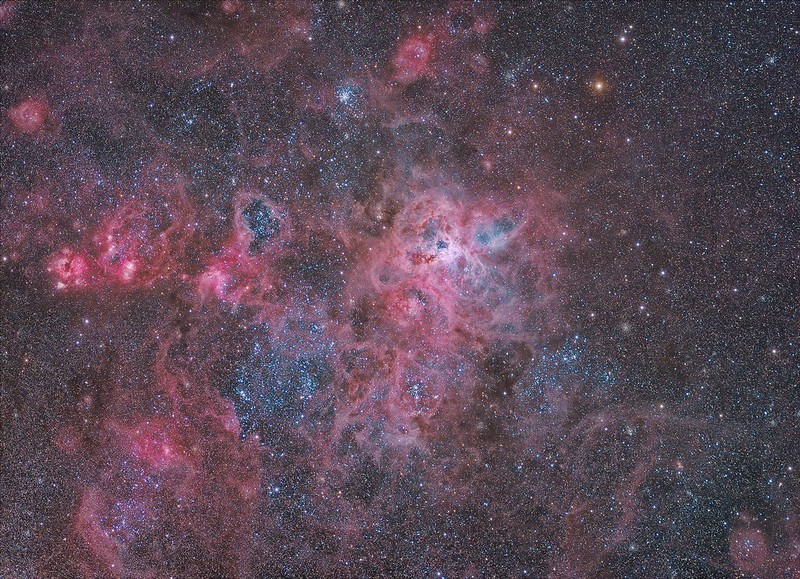TS 115/800
ZWO ASI 1600 mono cooled
LRGB (150 - 35 - 24 - 24)
Total: 233 minutos
PixInsight + PS6

LRGB Pronto by maicon germiniani, no Flickr



Interesting picture! The muted colors give the Large Magellanic Cloud a new appearance. The yellowish hues bring out the old to intermediate populations, and we can see that they are widespread. The blue populations are bright, and we can see some prominent pink Hα nebulas, too. The Tarantula Nebula is so bright that it looks white. Fascinatingly, that large halo appears to consist mostly of old to intermediate stars.tommy_nawratil wrote:Large Magellanic Cloud,
Captured at Barreal, a small village in the argentinean Andes at 1700m altitude near Cerro Mercedario.
Tamron 85mm f/1.8 at f/2.2 Eos6da Iso 800 76x2min subs
full size and data: http://www.astrobin.com/285694/
There is big faint halo and some IFN filaments in the field, not often seen.
cheers, Tommy





